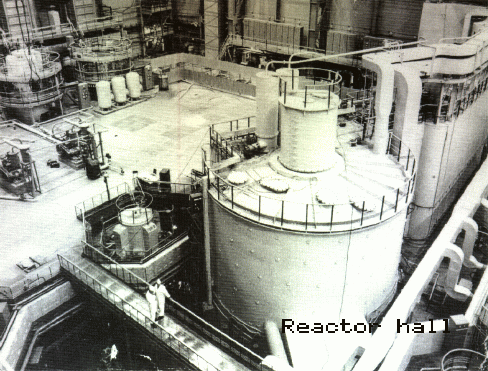My recent posts have been about breeder reactors which generate more fissile material than they consume. There is renewed global interest in breeder reactors for the production of nuclear fuel and the destruction of nuclear waste. Today’s post is the first in a series about the history and current status of breeder reactors in India.
India started talking about fast breeder reactor technology in the 1950s in order to develop an independent nuclear industry for power generation although they do not have much in the way of natural uranium resources. They set out on a three stage program that continues today.
In the first stage, uranium fuel would be created and burned in heavy water reactors. The spent fuel from these reactors would then be reprocessed in order to extract the plutonium.
The plutonium extracted during the first stage would then be used to fuel the cores for fast breeder reactors. There were two configurations for the second stage plutonium fueled reactors. In the first type, a blanket of natural or depleted uranium would be wrapped around the core to produce more plutonium. In the second type, thorium would be in the blanket around the core and U-233 would be produced. The plan was to process uranium through the first type of fast breeder in order to produce enough plutonium to sustain the future fleet of anticipated reactors.
In the third stage, when enough plutonium was available, a new generation of thorium breeders would be built. Although the thorium/U-233 fuel cycle was not as efficient or rapid as the uranium burning breeders, India has very little uranium and vast amounts of thorium.
India’s Department of Atomic Energy (DAE) began serious design studies on fast breeder reactors after 1960. An test fast breeder was constructed at the Bhabba Atomic Research Center in 1965 but was only tested for a few years. In 1969, India signs a collaborative agreement with the French Atomic Energy Commission. India obtained the design of the French Rapsodie reactor and the steam generator design from the French Phénix reactor. Combining these two designs, India began work on the Fast Breeder Test Reactor (FBTR). Indian scientists trained in France returned to India and began work at the new Reactor Research Center (RRC) in 1971 at Kalpakkam.
The FTBR was supposed to be completed by 1976 but it only achieved criticality in late 1985 and began generating steam in 1993. The FTBR had major and minor acidents during the first fifteen years of operation. In 1987, the system that rotated fuel assemblies out of the core failed and resulting efforts to deal with the problem occupied the next two years as successive as successive attempts to fix the problem resulted in even more mechanical damage. The original cause of the problem was never fully understood.
In 2002, defective manufacturing of valves in the sodium coolant circulating system failed and over one hundred and fifty pounds of molten sodium leaked out onto the floor of the purification room and solidified. The sodium was radioactive and dangerous for workers. When normal air was used to replace the nitrogen around the purification room, the sodium started sparking and burning. The dust used to put out the fires hung in the air and made it difficult to see. The room was filled with nitrogen again and workers had to use mask supplied with oxygen through hoses. Finally, after three months, the sodium was removed.
With the problems detailed above and other difficulties, the reactor never operated for more than fifty consecutive days. Over its lifetime it was available only twenty percent of the time. Even with this poor record, the Indian government claimed that the experiment had been a successful demonstration of the feasibility of fast breeder reactors.
India Fast Breeder Test Reactor at Kalpakkam:







